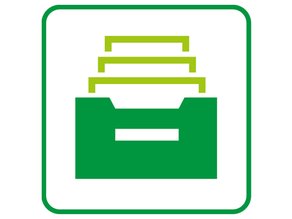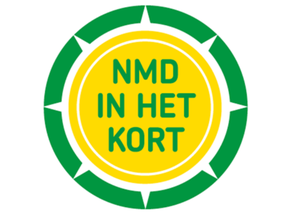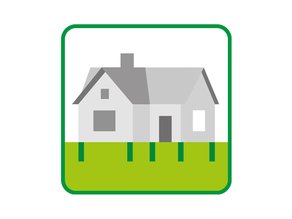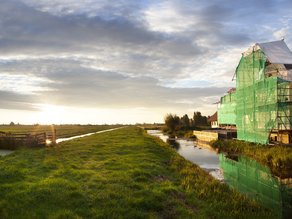Databases
The Stichting NMD databases contain environmental data that are used to calculate the environmental performance of construction works. As well as the background process and basic profile database used by Life Cycle Assessment (LCA) practitioners, there’s also an environmental declaration database that we call the National Environmental Database (NMD).
Is this subject new to you? Go to our NMD in short explanation about databases or watch the video in which Lotte talks about environmental performance. Don't forget to turn on the subtitles because the video is in Dutch.
The National Environmental Database contains environmental data used to calculate the environmental performance of construction works. The NMD process database is a collection of specific and generic environmental processes and semi-finished products used in LCAs, such as material production, waste processing, transport, and energy generation. From the databases and environmental profiles to information about data admission: explore how the database is structured and how to work with it.
Read on to learn more about the components of the NMD

Dutch Environmental Database
Curious how the National Environmental Database works and what you can do with it? Read on and discover how this data source contributes to sustainable construction

Process database
The NMD process database provides environmental data on construction processes and semi-finished products for LCAs. Learn more about how this supports environmental performance assessments.

Differences between the databases of the NMD
The NMD databases contain environmental data on construction products, processes and semi-finished products. Read more about the content and application of these databases.

Databases in het kort
The NMD databases form the basis for calculating the environmental performance of construction works. Read on for a brief explanation of each database.

Viewer
The NMD Viewer allows you to quickly and easily consult environmental data on construction products. Try it yourself and discover what’s in the Dutch Environmental Database.

Functional descriptions
Functional descriptions ensure consistency in the NMD by describing products and processes in a uniform way. Read more about how this works and why it matters.

Information for data users
The data from the NMD is used by a wide range of stakeholders in the construction sector for reliable environmental performance assessments. Read on to discover how they apply the data.

Filling the Gaps Compensation Scheme
The Filling the Gaps Compensation Scheme maps missing environmental data in the NMD and works on targeted additions. Read more about the approach and objectives.

Why a category 1 or 2 product card in the NMD?
Category 1 and 2 environmental declarations provide up-to-date, product- and brand-specific data in the NMD. Read why these declarations are essential for reliable environmental performance assessments.

Feedback on the assessment method or data
User feedback helps the NMD continuously improve the database and better align it with practice. Read how you can provide feedback and what happens with it.

Frequently asked questions about the database
Questions about the NMD database? Check out the frequently asked questions for clear answers and practical explanations.
Frequently asked questions about the Database
Stichting NMD manages both the National Environmental Database (NMD) as well as the NMD Process Database. The NMD is a database filled with environmental declarations. This is the database that is used by the calculation tools to produce ECI and EPD calculations. The NMD Process Database is used as source (to draw up LCAs) for the data included in the environmental declarations in the NMD.
The environmental declarations and basic profiles should be reviewed for timeliness from time to time and then updated as necessary. The same shelf life applies to both with a periodic expiration date of 5 years. After this period, environmental declarations and basic profiles must be updated. This can also be done in the interim, for example after changes in the production process that affect environmental performance. Data owners can have their data changed by submitting a new template.
A background process is a process that affects a producer's or supplier's product, but over which the producer or supplier has no direct influence and which occurs elsewhere in the chain; for example, production of electricity or a raw material.



